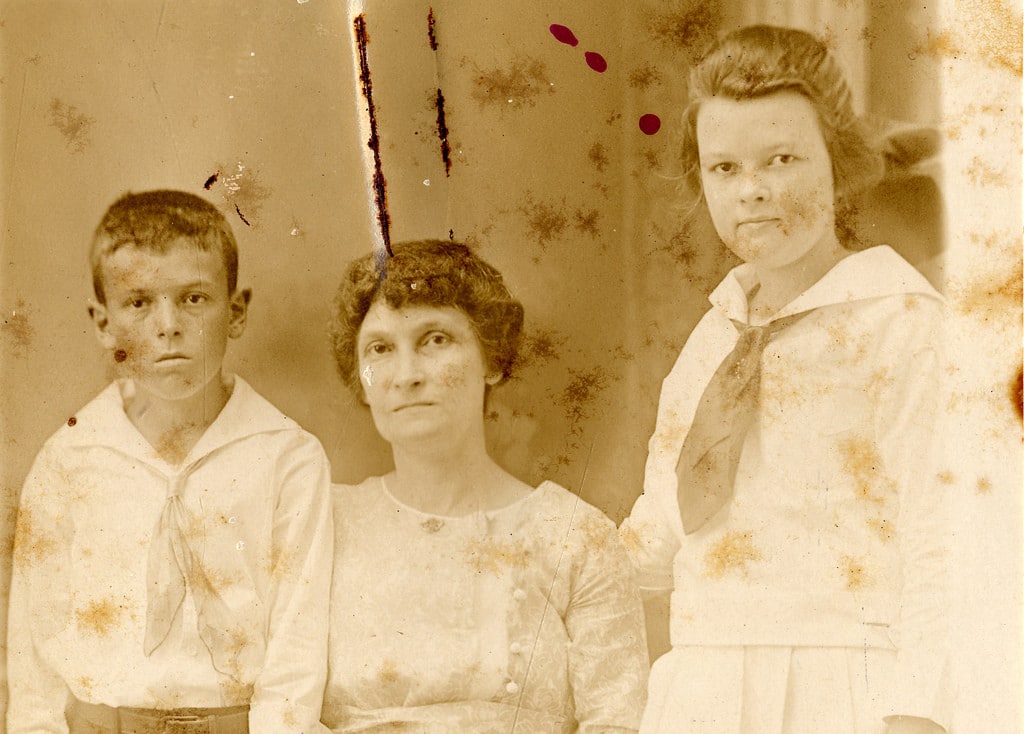Many family historians are not aware of the fact that millions of passport applications were collected by the US Department of State between the years of 1795 and 1925.
These applications are kept by the National Archives and Record Administration (NARA) and are packed full of personal information that can help you in your research – such as birth date and location, name of father or husband, names of children, occupation and much more. In some case, there are even photographs.
Don’t think your US ancestor could have applied for a passport? You might be surprised to hear that travel was actually quite common during this time period. The National Archives points out that “Overseas travelers included businessmen, the middle class, and naturalized U.S. citizens who returned to their homelands to visit relatives.”
And although 95% of mid-19th century applications went to men, spouses and children were included if they were traveling as well. Because of this, the amount of information to be found in these documents is astounding.
The good news is that these records are now available online for free. In partnership with NARA, FamilySearch offers these records directly on their website. The images are currently being indexed so you can not search every single record yet, but you can search through many and others can be accessed through browsing.
Passport Application from 1924

To find the free online collection visit this page on FamilySearch. Use the search boxes first to see if you can locate an ancestor. Remember to search for a husband’s name as well if looking for a woman and try many spellings since errors in records of any sort are common.
If you cannot find your ancestors via search you will need to browse the images instead. You can do this by clicking on the “Browse” link on the database’s search page or by visiting this link and then selecting a collection by date. Use the FamilySearch info page for this collection for help with browsing information and more details about this database.
For further information, a wonderful breakdown from NARA on how to use these records in your research can be found right here.
And be sure to look for passport applications elsewhere that relate to other locations, dates and purposes. There are a variety of collections available online that may provide valuable data about your ancestors.
By Melanie Mayo, Family History Daily Editor
Image: Florida Keys Public Library on Flickr “Sarah E. Miller passport application photo for herself and daughter, Elinor, born 19 April 1906, and son, Perry, born 20 November 1907, both at Port Tampa, Florida.”

can I find family information on the application an old passport of my father
Looking for Benjamin Sarro death certificate and cemetery
Do you have pass[ports of people coming from Italy 1902 through 1904??!
Thank you,
Barb Mogush
Will there be any additional passport applications posted beyond 1925?
I wish these were indexed in alphabetical order! If I search place of birth (in this case Italy) and place of residence, it goes from surnames beginning with S to H, to A, T, etc.!! really time consuming to look through!
l took out the free trail on april 12 4 2weeks,after 3days i was unable 2 access the site as it would not except my password,i sent numerous email’s 2 u asking u for my password 2 b sent in case it was the incorrect password.But my free trail expired on the 26april.On the 27th APRIL u took out £60.As i did’nt get the full 2weeks,of my trail i would like my money reimburse.And my free trail start up again,and for me to be allowed 2 put in a new password.As it did look a decent site with plenty of information.Plus i thought your site was £14.00 a month,so the amount you took out any way was far to much.I’m sure you can back track into my account that what i’ve z is correct.Please reply back soon KEITH
Thanks B. for taking the time to point this error out — we have fixed it.
FYI…. .In the article about passport applications by Melanie Mayo, under the picture, is a statement: “Remember to search for a husband’s name as well if searching for a women…..” . . . should be “a WOMAN”. Glad to have this information….just thought you might want to correct this error.